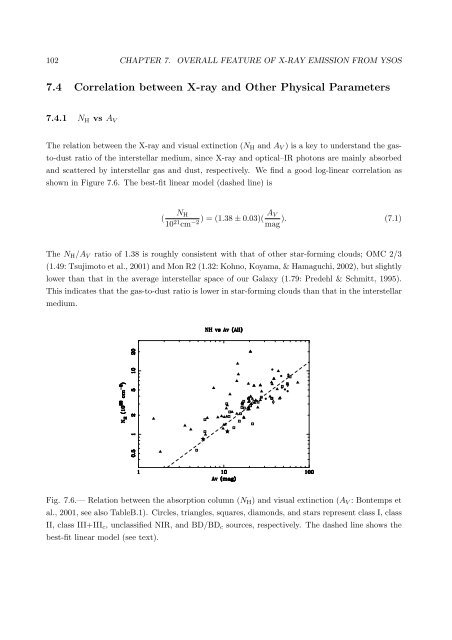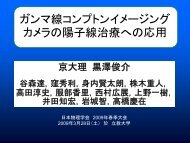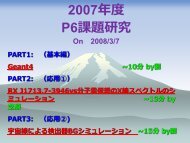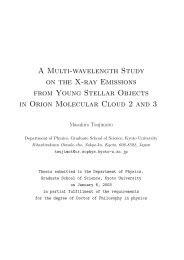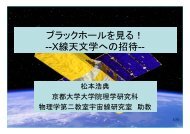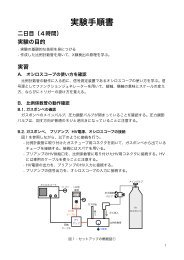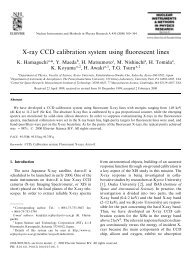X-ray Study of Low-mass Young Stellar Objects in the ρ Ophiuchi ...
X-ray Study of Low-mass Young Stellar Objects in the ρ Ophiuchi ...
X-ray Study of Low-mass Young Stellar Objects in the ρ Ophiuchi ...
You also want an ePaper? Increase the reach of your titles
YUMPU automatically turns print PDFs into web optimized ePapers that Google loves.
102 CHAPTER 7. OVERALL FEATURE OF X-RAY EMISSION FROM YSOS7.4 Correlation between X-<strong>ray</strong> and O<strong>the</strong>r Physical Parameters7.4.1 N H vs A VThe relation between <strong>the</strong> X-<strong>ray</strong> and visual ext<strong>in</strong>ction (N H and A V ) is a key to understand <strong>the</strong> gasto-dustratio <strong>of</strong> <strong>the</strong> <strong>in</strong>terstellar medium, s<strong>in</strong>ce X-<strong>ray</strong> and optical–IR photons are ma<strong>in</strong>ly absorbedand scattered by <strong>in</strong>terstellar gas and dust, respectively. We f<strong>in</strong>d a good log-l<strong>in</strong>ear correlation asshown <strong>in</strong> Figure 7.6. The best-fit l<strong>in</strong>ear model (dashed l<strong>in</strong>e) isN H(10 21 cm −2 ) = (1.38 ± 0.03)( A V). (7.1)magThe N H /A V ratio <strong>of</strong> 1.38 is roughly consistent with that <strong>of</strong> o<strong>the</strong>r star-form<strong>in</strong>g clouds; OMC 2/3(1.49: Tsujimoto et al., 2001) and Mon R2 (1.32: Kohno, Koyama, & Hamaguchi, 2002), but slightlylower than that <strong>in</strong> <strong>the</strong> average <strong>in</strong>terstellar space <strong>of</strong> our Galaxy (1.79: Predehl & Schmitt, 1995).This <strong>in</strong>dicates that <strong>the</strong> gas-to-dust ratio is lower <strong>in</strong> star-form<strong>in</strong>g clouds than that <strong>in</strong> <strong>the</strong> <strong>in</strong>terstellarmedium.Fig. 7.6.— Relation between <strong>the</strong> absorption column (N H ) and visual ext<strong>in</strong>ction (A V : Bontemps etal., 2001, see also TableB.1). Circles, triangles, squares, diamonds, and stars represent class I, classII, class III+III c , unclassified NIR, and BD/BD c sources, respectively. The dashed l<strong>in</strong>e shows <strong>the</strong>best-fit l<strong>in</strong>ear model (see text).


